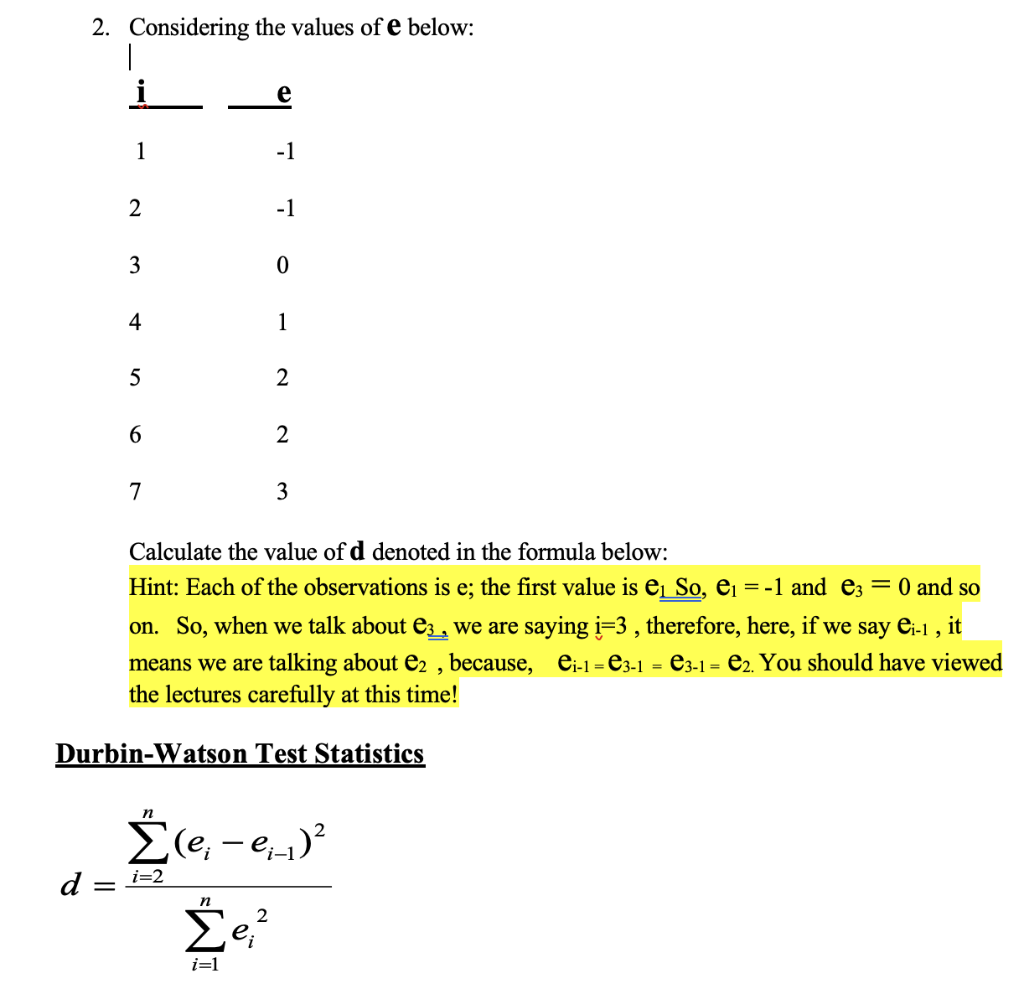Home /
Expert Answers /
Statistics and Probability /
2-considering-the-values-of-mathbf-e-below-calculate-the-value-of-mathbf-d-denot-pa274
(Solved): 2. Considering the values of \( \mathbf{e} \) below: Calculate the value of \( \mathbf{d} \) denot ...
2. Considering the values of \( \mathbf{e} \) below: Calculate the value of \( \mathbf{d} \) denoted in the formula below: Hint: Each of the observations is e; the first value is \( \mathrm{C}_{\underline{1}} \mathrm{So}_{\text {o }}, \mathrm{e}_{1}=-1 \) and \( \mathrm{e}_{3}=0 \) and so on. So, when we talk about \( \mathbf{e}_{\hat{3},} \) we are saying \( \mathrm{i}=3 \), therefore, here, if we say \( \mathbf{C}_{\mathrm{i}-1} \), it means we are talking about \( \mathbf{e}_{2} \), because, \( \mathbf{e}_{\mathrm{i}-1}=\mathbf{e}_{3-1}=\mathbf{e}_{3-1}=\mathbf{e}_{2} \). You should have viewed the lectures carefully at this time! Durbin-Watson Test Statistics \[ d=\frac{\sum_{i=2}^{n}\left(e_{i}-e_{i-1}\right)^{2}}{\sum_{i=1}^{n} e_{i}^{2}} \]
